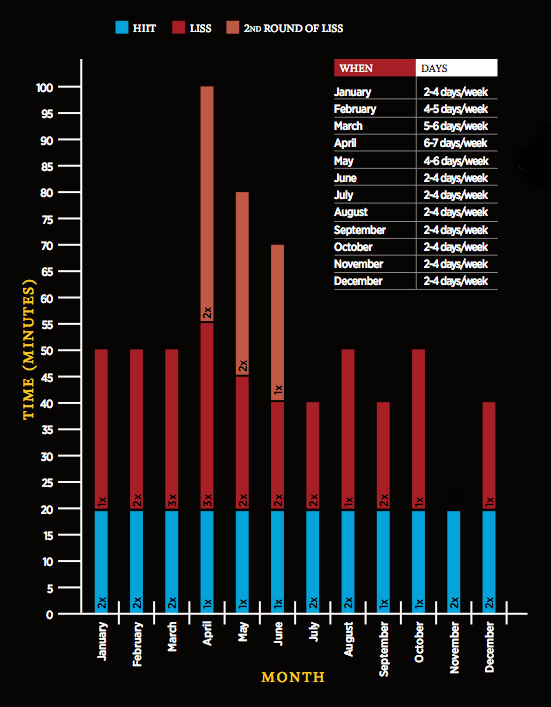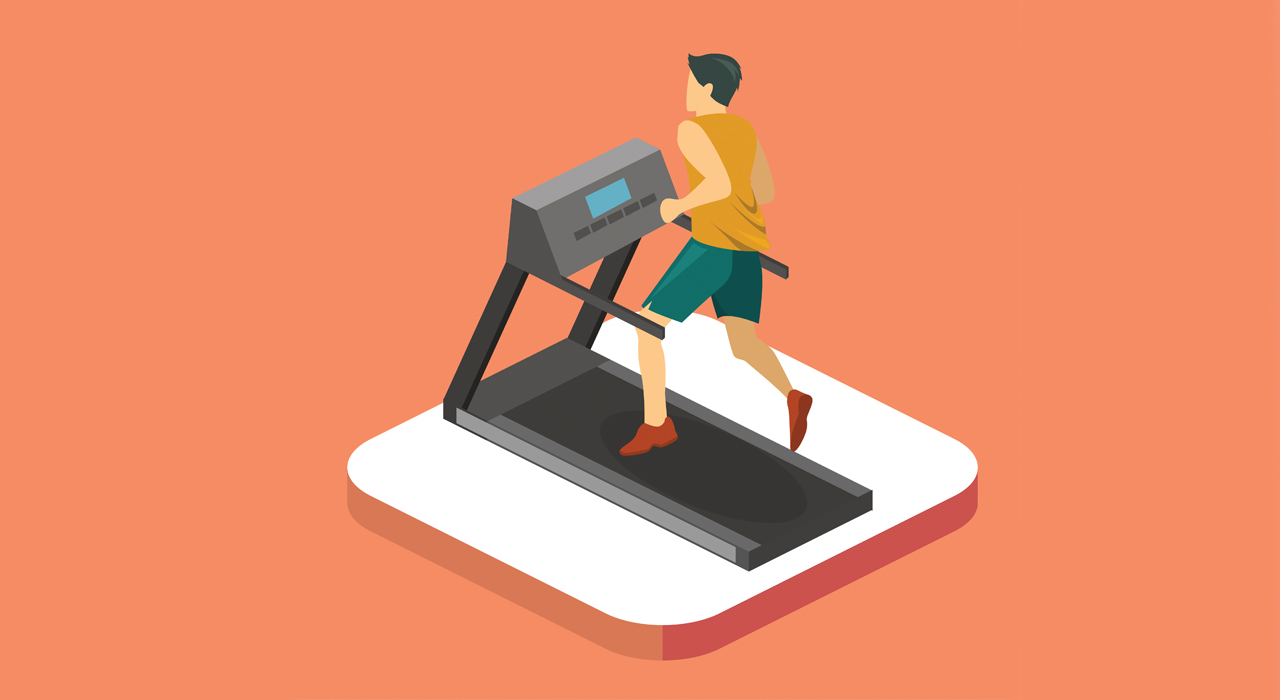It’s a safe bet to say cardio is about as fun as beard of bees. You can normally justify your abstinence from it in two ways: it breaks down muscle and cannibalizes strength.
However, these negative stigmas are not true of all cardio, especially when you have a well constructed cardio plan to bring out your fittest and best physique.
The negative effects of cardio
These negative effects of cardio can occur when breaking the golden rule of striking the right balance. So how much is too much?
It’s not just about too much, but rather too much for too long. Your body is very adaptable, so you could increase your training much more than you think for a short amount of time and still benefit.
So why not do exactly that? Increase cardio training only when you need to and decrease it when you don’t.
That’s the basic idea behind long-term cardio periodization, where you change the amount of cardio based on your current goals and progress.
Learn from the pro. Your cardio periodization trainer – Brandan Fokken, IFBB physique pro and Dymatize athlete
Cardio periodization secrets of the pros
Cardio periodization is seen a lot in anyone who wants to gain muscle.
Top-level bodybuilders are professionals at peaking their physiques for a target date and year after year, we see these guys get back on stage bigger and better than they were the year before.
While you may not consider yourself one of these codpiece-wearing muscle elites, you can use one of their secrets.
To get a better understanding you need to think of a long-term routine. Bodybuilders have an off-season, prep, and a peaking phase.
The off-season is a time to maintain or build muscle mass and less cardio is required.
On the other hand, the prep and peaking phases require more cardio to lean down. After the peak date, the cycle starts over. The goal is to be in the best condition of all time.
This doesn’t just apply to competitive athletes; it’s a great strategy for everyone.
After you’ve reached your goal weight (peak) continue to do cardio, but you don’t have to increase cardio just to maintain that weight. You can slowly decrease cardio while still staying lean.
Create your cardio plan
So how do you go about scheduling your cardio periodization? First, start with medium-term goals, then look at a calendar and find the dates you want to peak at.
From these, you can break it down month-by-month to plan your maintenance and peaking phases.
You may want to gradually increase the amount over a three-month peaking phase, then slowly taper down to a maintenance phase.
Just because you have a schedule doesn’t mean these sessions are set in stone. You’ll need to be able to adjust in real time based on your progress, so break it down by week, basing your amount on results.
The simple cardio periodization schedule
Here’s an easy way to go about setting up a cardio periodization calendar. Let’s say there’s a big event or competition where you want to rock your best shape four months from now.
You should plan for a three-month cutting phase, so here’s what a yearly cardio calendar for a physique athlete would look like:
| WHEN | DAYS | TIME |
|---|---|---|
| Regular routine | 2-4 days/wk | 20-30 minutes |
| Month 1 | 4-5 days/wk | 30 minutes |
| Month 2 | 5-6 days/wk | 30-35 minutes |
| Month 3 | 6-7 days/wk | 35-45 minutes |
| Month 4 | 4-6 days/wk | 25-35 minutes |
| Regular routine | 2-4 days/wk | 20-30 minutes |
Map out your years cardio plan
You’ll notice there’s a gradual increase in the amount, the closer the end date gets. There is also some flexibility to the number of cardio sessions and the length, which allows you to adjust based on your progress.
If you are losing fat as scheduled, don’t increase cardio or cut macros. However if you aren’t, you can always add another session, increase the duration or ramp up the intensity.
Remember, this is not a rigid plan and things will change, but the key is to only increase cardio when your weight/body fat doesn’t go down.
Now take a look at the schedule after the end date. There is a gradual decrease in the amount of cardio over a month or two, as there’s no need to continue cardio at 6-7 days/week to stay lean.
In fact, you can do less cardio and eat more and still maintain a lean physique, because you no longer need to be at a calorie deficit.
Eat more to supply your body with the energy needed to maintain it, and you can also decrease cardio to help balance out the energy levels.
Once in a full building phase, drop it down to a couple of times a week as too much will likely inhibit muscle gains.
For a more detailed look, here’s an example of the previous schedule with cardio types and amounts to map out a full year’s plan, even though you’re part way through it.

Plan your cardio, plan for results
Cardio periodization allows you to outline your year giving you a sense of direction, and it’s a great way to keep you on schedule to achieve your goal.
It’s also very flexible since you oversee your schedule, so if something comes up or plans change then you can adjust your cardio schedule as needed.
When it comes to your cardio plan there are a few key points you want to remember: make sure to include both a peaking phase and muscle building phase, assess your progress on a weekly basis and make changes accordingly.
In order to keep this progression, you can switch up the type of cardio or increase the intensity, duration, or frequency. This will ensure you’re always gaining muscle while losing plenty of body fat.
For more articles similar to this cardio plan, nutrition and training, get TRAIN magazine direct into your inbox every month for free by signing up to our newsletter







